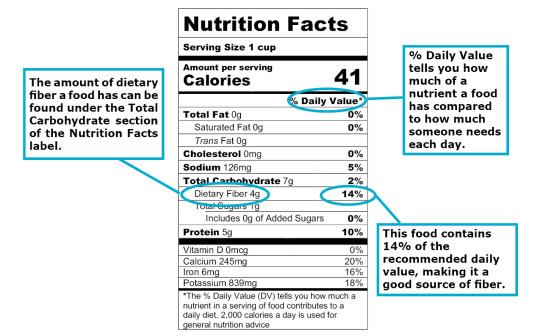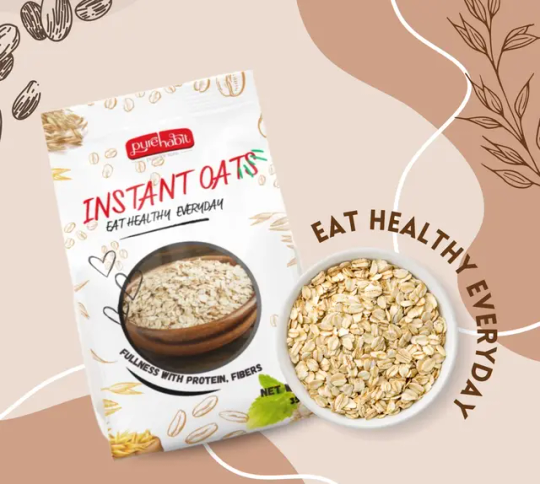#the role of fiber in diabetes management
Explore tagged Tumblr posts
Text
#the role of fiber in diabetes management#fiber and blood sugar control#high-fiber foods for diabetics#soluble vs insoluble fiber for diabetes#fiber supplements for diabetes#fiber intake recommendations for diabetics#managing diabetes with a high-fiber diet#fiber and insulin resistance#fiber and type 2 diabetes risk#fiber and weight management for diabetics
0 notes
Text
Story at-a-glance
Butyrate, a short-chain fatty acid produced when gut bacteria ferment dietary fiber, serves as both an energy source for colon cells and an important signaling molecule for immune regulation
By inhibiting histone deacetylases (HDAC) and suppressing the NF-κB pathway, butyrate acts as a powerful anti-inflammatory agent, helping prevent chronic inflammation that contributes to various diseases
Butyrate promotes regulatory T cell development while modulating other immune cells, helping maintain immune tolerance and preventing autoimmune responses while supporting balanced immune function
Butyrate plays a significant role in managing chronic diseases like IBD, multiple sclerosis and Type 2 diabetes by reducing inflammation and supporting gut barrier function
Emerging research suggests that butyrate influences brain health by modulating the gut-brain axis; it reduces neuroinflammation and supports cognitive function, and plays a supporting role in the prevention of neurological disorders like Alzheimer's disease and depression
10 notes
·
View notes
Text

Nutritional Eating As Disease Prevention
Nutritional eating is a powerful tool in preventing a wide range of diseases. By making conscious food choices, we can significantly reduce our risk of developing chronic conditions such as heart disease, diabetes, stroke, and certain types of cancer.
Here's how:
Building A Strong Foundation
* Focus on whole foods: Prioritize fruits, vegetables, whole grains, lean proteins, and healthy fats. These foods are packed with essential nutrients, fiber, and antioxidants.
* Limit processed foods: These often contain high levels of unhealthy fats, sodium, and added sugars, which can contribute to chronic diseases.
* Control portion sizes: Even healthy foods can contribute to weight gain if consumed in excess.
* Stay hydrated: Water is essential for overall health and helps regulate various bodily functions.
Targeting Specific Diseases
* Heart health: Reduce saturated and trans fats, consume plenty of fruits, vegetables, and whole grains, and include sources of omega-3 fatty acids like fish.
* Diabetes prevention: Maintain a healthy weight, choose whole grains over refined carbohydrates, and incorporate fiber-rich foods into your diet.
* Cancer prevention: Increase consumption of fruits, vegetables, and whole grains, limit red and processed meat, and maintain a healthy weight.
* Strong immune system: Consume a variety of colorful fruits and vegetables, rich in antioxidants, to support immune function.
Additional Tips
* Read food labels: Understand what you're consuming by checking ingredient lists and nutritional information.
* Cook at home: This allows you to control the ingredients and portion sizes.
* Seek professional advice: A registered dietitian can provide personalized guidance based on your specific needs and health goals.
Remember, while nutrition plays a crucial role in disease prevention, it's essential to combine it with other healthy lifestyle factors such as regular physical activity, adequate sleep, and stress management.
#comfort food#fast food#food fight#healthy food#food photography#food for thought#foodie#food#foodpics#foodmyheart#foodlover#tw food#lunch recipes#pasta recipes#pasta recipe#salad recipes#soup recipe#recipe#reciprocidade#reciprocity#recipies#recipes#cozy autumn#cozy fall#cozy art#healhtylifestyle#healthy salad recipes#healthy lunch ideas#healthy lunch#healthy diet
23 notes
·
View notes
Text

Understanding FDA Guidance: "Excellent Source of Fiber" and "Good Source of Fiber"
Welcome to fitscientist! I'm a food scientist irl and I see a lot of misconceptions about packaging claims out there - I'm trying to be more active on my tumblr (instead of just reblogging/queuing pretty pictures - which obviously I will continue to do!!) and I'd like to share my expertise with you all so we're all more knowledgeable about food labeling, packaging, and more - especially as we are all on our fitness journies together :) The more you know!
Today, we'll be discussing the FDA's guidance on "Excellent Source of Fiber" and "Good Source of Fiber" claims found on food packaging. Understanding these claims can help you make informed choices when selecting products that contribute to your daily fiber intake. Let's dive in!
FDA Guidance on "Excellent Source of Fiber" and "Good Source of Fiber"
The FDA has established specific criteria for food manufacturers to use the terms "Excellent Source of Fiber" and "Good Source of Fiber" on their packaging. These claims are intended to inform consumers about the fiber content of a particular food product.
Here's a breakdown of the FDA's guidance:
1. "Excellent Source of Fiber": - To make an "Excellent Source of Fiber" claim, a food product must contain at least 20% of the Daily Value (DV) for fiber per serving. - The DV for fiber is 28 grams per day based on a 2,000 calorie diet. - Therefore, a food item must contain at least 5.6 grams of fiber per serving to qualify as an "Excellent Source of Fiber."
2. "Good Source of Fiber": - To make a "Good Source of Fiber" claim, a food product must contain at least 10% of the DV for fiber per serving. - This means the food item should contain at least 2.8 grams of fiber per serving.
It's important to note that these claims are based on the fiber content per serving of the food product. Different products may have varying serving sizes, so it's crucial to check the serving size stated on the packaging to accurately gauge the fiber content you'll be consuming. Why Fiber is Important (as covered in a previous post, but a reminder on why fiber is important for our health!): - Fiber aids in digestion, promoting regular bowel movements and preventing constipation. - It helps control appetite by keeping us feeling full for longer periods, which can support weight management goals. - Fiber plays a role in regulating blood sugar levels, making it beneficial for individuals with diabetes or those aiming for stable energy levels. - A high-fiber diet has been linked to a reduced risk of heart disease and improved cardiovascular health. When shopping for food products, the "Excellent Source of Fiber" and "Good Source of Fiber" claims can be helpful indicators of a product's fiber content. By understanding the FDA's guidance, you can make informed choices to meet your daily fiber needs. Remember to check the serving size and consider incorporating a variety of fiber-rich foods into your diet for optimal health benefits. Stay nourished and enjoy a fiber-filled lifestyle! Disclaimer: The information provided in this blog post is for educational purposes only and should not replace professional medical advice nor guidance for front-of-pack labeling claims. Please consult with a healthcare professional or registered dietitian for personalized dietary recommendations, and consult with a regulatory professional for guidance on product content or other claims for your own products.
#informational#health#nutrition#fitblr#fitfam#fitness#fitblrs#running#food#fitspo#workout#weightlifting#gym motivation#healthy food#healthy living#healthyfood#healthy eating#nutrients#healthy#fiber#fiber intake#soluble fiber#insoluble fiber#public health#personal#my post#personal fitblr#healthy lifestyle#healthy diet#food packaging
33 notes
·
View notes
Text
The Role of Protein-Rich Foods in Semaglutide-Fueled Weight Loss
Semaglutide, a medication originally developed for managing Type 2 diabetes, has gained significant attention for its weight loss benefits. However, to maximize its effectiveness, a supportive diet is essential. Protein-rich foods play a crucial role in enhancing the weight loss effects of Semaglutide, making them an indispensable part of your dietary plan. In this article, we’ll explore why protein matters, how it complements Semaglutide, and highlight the best foods to eat on Semaglutide for sustainable weight loss.
Why Protein Matters for Weight Loss

Protein is a vital macronutrient that supports multiple bodily functions, especially during weight loss. Its benefits include:
1. Increased Satiety
Protein helps you feel fuller for longer by reducing the hunger hormone ghrelin and increasing appetite-regulating hormones like GLP-1, the same hormone targeted by Semaglutide. Combining protein with Semaglutide enhances feelings of fullness and minimizes overeating.
2. Muscle Preservation
When losing weight, the body can lose muscle mass along with fat. Protein helps preserve lean muscle, ensuring that the majority of weight lost comes from fat. This is crucial for maintaining a healthy metabolism.
3. Boosted Metabolism
Digesting protein requires more energy than digesting fats or carbohydrates, a phenomenon known as the thermic effect of food (TEF). Including protein-rich foods in your Semaglutide-fueled diet can give your metabolism a slight boost.
How Protein-Rich Foods Complement Semaglutide
Semaglutide works by mimicking GLP-1, a hormone that regulates appetite and blood sugar levels. Protein-rich foods enhance this effect by naturally stimulating GLP-1 secretion. This synergy leads to:
Enhanced appetite control
Improved blood sugar stability
Better adherence to calorie-controlled diets
When combined with a high-protein diet, Semaglutide can deliver faster and more sustainable weight loss results.
Best Protein-Rich Foods to Eat on Semaglutide

To ensure your diet aligns with Semaglutide’s benefits, focus on these protein-rich options:
1. Lean Meats
Chicken Breast: Low in fat and high in protein, chicken breast is an excellent choice for weight loss.
Turkey: Another lean meat option that’s rich in protein and low in calories.
2. Fish and Seafood
Salmon: Packed with protein and omega-3 fatty acids, salmon promotes heart health while keeping you full.
Tuna: A convenient, protein-dense food that’s perfect for quick meals or snacks.
Shrimp: Low-calorie and high in protein, shrimp is an ideal addition to a weight loss diet.
3. Eggs
Eggs are versatile, nutrient-rich, and an affordable source of high-quality protein. They’re perfect for breakfast, snacks, or as a meal component.
4. Dairy Products
Greek Yogurt: High in protein and probiotics, Greek yogurt supports digestion and satiety.
Cottage Cheese: A low-fat, protein-packed dairy option that’s easy to incorporate into meals.
5. Plant-Based Proteins
Legumes: Lentils, chickpeas, and black beans are rich in protein and fiber, making them a filling and nutritious choice.
Tofu and Tempeh: Excellent options for vegetarians and vegans, these soy-based proteins are versatile and nutrient-dense.
Quinoa: A complete protein that’s also gluten-free and rich in fiber.
6. Nuts and Seeds
While calorie-dense, nuts and seeds like almonds, chia seeds, and flaxseeds provide plant-based protein, healthy fats, and fiber. Consume them in moderation.
How to Incorporate Protein-Rich Foods Into Your Diet

1. Prioritize Protein at Every Meal
Ensure that each meal contains a significant protein source to maintain satiety and support muscle preservation.
2. Snack Smart
Choose protein-rich snacks like boiled eggs, Greek yogurt, or a handful of nuts to curb hunger between meals.
3. Combine Protein With Fiber
Pair protein with fiber-rich foods like vegetables or whole grains to enhance satiety and support digestion.
4. Plan and Prep Meals
Prepping meals with a focus on protein ensures you stay consistent with your dietary goals while on Semaglutide.
Foods to Limit or Avoid
While protein-rich foods are beneficial, it’s essential to avoid processed and high-fat protein sources, such as:
Fried meats
Processed deli meats (e.g., sausages, hot dogs)
Full-fat dairy products
Instead, opt for lean, minimally processed options to maximize weight loss benefits.
Breaking Through Weight Loss Plateaus on Semaglutide
Even with Semaglutide, weight loss plateaus can occur. Increasing protein intake is one strategy to break through a plateau. Other tips include:
Adjusting Calorie Intake: Reassess your calorie needs as your weight decreases.
Increasing Physical Activity: Incorporate resistance training to build muscle and boost metabolism.
Hydration and Sleep: Staying hydrated and getting enough sleep are essential for weight loss success.
Conclusion
Protein-rich foods play a pivotal role in enhancing the weight loss effects of Semaglutide. By prioritizing lean proteins, incorporating plant-based options, and avoiding processed choices, you can maximize the medication’s benefits and achieve sustainable results.
Discover the best foods to eat on Semaglutide and make protein a cornerstone of your dietary plan for a healthier, more successful weight loss journey!
2 notes
·
View notes
Text
The High Rate Of Diabetes In Congo

In recent years, diabetes has become a growing public health concern in the Democratic Republic of the Congo (DRC), a country traditionally known for infectious diseases like malaria. While attention has primarily focused on combating communicable diseases, the surge in non-communicable diseases (NCDs) like diabetes is an issue that can no longer be ignored. This blog delves into the reasons behind the rising rate of diabetes in Congo, shedding light on the factors contributing to this growing health crisis.
1. Urbanization and Lifestyle Changes
One of the primary contributors to the increasing rate of diabetes in Congo is the rapid urbanization occurring across the country. As people migrate to cities for better job opportunities, they adopt more sedentary lifestyles. Physical activity levels decrease as jobs become less labor-intensive, and there is increased reliance on modern transportation.
Alongside this, urban living brings greater access to processed foods, which are high in sugar and unhealthy fats. These dietary shifts, coupled with reduced physical activity, significantly increase the risk of developing Type 2 diabetes. Traditional diets rich in fiber and low in fat have been replaced by fast foods, sugary beverages, and snacks, creating a perfect storm for the rise of diabetes.
2. Poverty and Limited Access to Healthcare
Congo is one of the poorest countries in the world, and poverty plays a crucial role in the increasing rate of diabetes. With limited financial resources, many people cannot afford regular medical checkups or treatments for chronic conditions. As a result, diabetes often goes undiagnosed and untreated until complications arise.
The healthcare system in Congo is also underdeveloped, with limited access to healthcare professionals, medications, and diagnostic tools. This makes it difficult for individuals with diabetes to manage their condition effectively, leading to poor outcomes and a higher prevalence of complications such as heart disease, kidney failure, and amputations.
3. Lack of Awareness and Education
A lack of public awareness and education about diabetes is another factor contributing to the rise of the disease in Congo. Many people are unaware of the signs and symptoms of diabetes, which leads to delayed diagnosis. Additionally, misconceptions about the disease are prevalent, and some people may attribute its symptoms to other health conditions or even spiritual causes.
Without adequate education, people are less likely to adopt healthy lifestyle changes, such as improving their diet or increasing physical activity, both of which are critical in preventing and managing diabetes.
4. Genetic Predisposition
Genetics also plays a role in the increasing prevalence of diabetes in Congo. Some populations may be more genetically predisposed to developing the disease, especially if combined with environmental factors like poor diet and lack of exercise. Studies show that individuals of African descent are at higher risk of developing Type 2 diabetes compared to other ethnic groups.
5. Post-Conflict Stress and Trauma
The DRC has been plagued by decades of conflict and political instability, which has left many people traumatized and displaced. Chronic stress and trauma can lead to elevated blood sugar levels, increasing the risk of developing diabetes over time. The stress of daily survival, poor living conditions in refugee camps, and the lingering effects of war all contribute to the rise of diabetes in the country.
6. Inadequate Policy Responses and Health Infrastructure
While Congo has made strides in addressing communicable diseases, efforts to combat non-communicable diseases like diabetes have lagged behind. The country lacks comprehensive national policies for diabetes prevention and control. Public health campaigns targeting diabetes awareness are minimal, and there is a shortage of trained healthcare providers to diagnose and treat the disease.
Without a strong healthcare infrastructure in place, individuals with diabetes are left to fend for themselves, often turning to traditional healers or home remedies that may not be effective in managing the condition.
7. Consequences of the Diabetes Epidemic
The rising tide of diabetes in Congo has far-reaching consequences. As more people develop diabetes, the burden on the healthcare system intensifies, further straining already limited resources. The economic impact is also significant, as individuals with diabetes often miss work due to illness, reducing productivity and income.
Moreover, diabetes-related complications, such as blindness, amputations, and kidney disease, place additional stress on families and communities, making it difficult to break the cycle of poverty and poor health.
Conclusion: Addressing the Growing Diabetes Crisis in Congo
The rise of diabetes in Congo is a complex issue driven by multiple factors, including urbanization, poverty, lack of awareness, and inadequate healthcare infrastructure. To combat this growing epidemic, Congo must invest in education and awareness campaigns that emphasize the importance of healthy eating and regular physical activity. Additionally, improving access to healthcare services and ensuring early diagnosis and treatment are crucial steps in reducing the burden of diabetes on the population.
Addressing the diabetes crisis in Congo requires a multi-faceted approach, combining public health interventions, policy changes, and community engagement. With the right resources and strategies, it is possible to slow the spread of diabetes and improve the quality of life for those affected by the disease.
2 notes
·
View notes
Text

•{Lemon Water & Sea Salt}•
Many of us have morning routines that are wonderful health practices — a morning meditation, a few yoga poses, a brisk walk around the neighborhood, or a delicious fruit-infused smoothie. Daily routines are vital to health and happiness, and this is especially true at the start of the day.
How about a quick and simple glass of warm lemon water with Himalayan salt? This simple drink can boost your morning health and wellness regimen — and it’s so easy to make. There are a number of professional athletes and Olympians who start their morning with lemon and salt water, which may say something about its effectiveness.
A 10-ounce glass of warm #lemon water with Himalayan salt in the morning can increase your immune function, decrease uric acid to fight inflammation, improve digestion, and balance your body. These benefits can be attributed to the vitamin C content of the lemon juice as well as the essential minerals contained in #Himalayansalt. This simple morning drink promotes vitality, health, and overall wellness, and may even improve your sex drive!
•Lemons are excellent for fighting inflammation. Lemons can help dissolve the uric acid in your joints, and also have been found to help build and repair tendons, ligaments, and bone. This anti-inflammatory property may be especially beneficial for people with rheumatoid arthritis and osteoarthritis, according to an American College of Physicians study on osteoarthritis, published in the Annals of Internal Medicine (2000).
•Aids in proper food and water absorption. A daily glass of lemon water with Himalayan salt may provide a better overall mineral balance, which promotes proper food and water absorption in your body, allowing essential nutrients to get where they need to be.
•Balances your body’s acidity (pH). The alkalizing effects of lemon and natural salt are highly useful for managing your body’s delicate pH balance, which is crucial for optimal functioning of the body’s systems.
•Boosts immune function. One lemon serves up 139 percent of your daily value (DV) for vitamin C. Squeezing one lemon into your morning is a natural alternative to that vitamin C supplement you may be taking.
•It’s a detox for your cells. The all-natural Himalayan salt mixed with lemon juice and water helps to pull toxins from your cells, reducing cellular toxicity. This may reduce your risk for various chronic diseases, as well as make you feel generally awesome!
•Reduces problematic cellulite. Natural salts like Himalayan salt have been used for centuries for skin care. Interestingly, most spa treatments for cellulitis contain some form of salt and/or citrus blend. A few daily gulps of lemon and salt water in the morning may firm up a few of those unsightly areas.
•Clears up skin and adds a fresh glow.Using natural salt for skin problems, such as psoriasis and eczema, dates back to ancient Roman times. Roman emperor Marcus Aurelius’ doctor, Galen from Pergamum, used sea salt for skin diseases, according to Science Tribune (1999).
•Useful for allergy season. It has been suggested that the combination of lemon and salt, specifically mixed into warm water, acts as a natural antihistamine for allergies. It may be the perfect alternative to those pink pills that leave you feeling drowsy.
•Paves the way for better sleep. The natural hormone-balancing properties of lemon and Himalayan salt can be more than useful when it comes to bedtime. Getting the proper amount of sleep is essential for physical health, mental health, productivity, and much more. This hormone-balancing beverage can make an effective nightcap.
•Helps controls blood sugar. The fiber content of lemons helps to balance blood glucose levels, which is useful for type 2 diabetes patients and prediabetics alike, according to a study published in the New England Journal of Medicine (2000).
•Lemons may help detoxify your liver.Vitamin C is essential for producing glutathione, which plays a foundational role in detoxifying the liver. It also has antiseptic properties that are useful for liver function, as well.
•Freshens breath! Lemon and Himalayan salt may not be the first things that come to mind when you think of fresh breath. However, the lemon and salt in this simple morning drink help kill the bad breath bacteria that build up while you’re sleeping.
•May help you chill out. When you get stressed out, do not be so quick to reach for those prescription pills. You may be able to chill out and return to that state of Zen by boosting your vitamin C levels first thing in the morning.
•Useful for reducing blood pressure.Lemons are not all about vitamin C and fiber. They also boast potassium, which is vital for flushing excessive sodium from the body.
•Boost your libido! The vitamin C content and hormone-balancing properties of this morning beverage can help lift your mood. This might be all it takes to boost your libido, without the need for that little blue pill.
•Gets you hydrated right out of the gate. Many people forget how important hydration is, especially after a seven or eight-hour sleep period with no water. Start your morning off right and get hydrated. The water, salt and zesty lemon will get your day off to the perfect start.
•An antioxidant powerhouse vital for, well, everything! Lemon offers up a wealth of vitamins and minerals, while Himalayan salt boosts your mineral and trace mineral levels even more. The antioxidant and detoxifying properties of lemon saltwater pack a powerful, free radical knockout punch.
•May improve your heart health.Lemons and real salt are both exceptional for increasing heart health on their own. However, when you combine the two into one vibrant morning drink, you get even more vital heart-thumping health benefits.
Natural salt supports electrochemical reactions in the body, while negative ions assist in healthy heart rhythm. Lemons are rich in vitamin C, which is, “associated with lower endothelial dysfunction in men with no history of cardiovascular disease or diabetes,” according to a study published in the American Journal of Clinical Nutrition (2006).
•Promotes digestive health. A glass of warm lemon water with Himalayan salt before breakfast, or any meal, helps signal your liver to produce the essential bile needed to clean out harmful gut bacteria. The fiber content and natural salt will also promote digestion.
Are you ready to commit to this simple and health-promoting morning drink? I have been drinking warm lemon water with a little bit of Himalayan salt every morning for months, and I absolutely love it. My energy levels are up, and I feel as cool as a cucumber throughout the day.
6 notes
·
View notes
Text
Train less if you want a great physique and to avoid a plateau

Experience
I have been a fitness enthusiast for at least four years and I have loved the ups and downs of my journey, It’s an unending path toward discovery, frustration, learning, and unlearning, I have also accepted the fact that the continuous pursuit of this lifestyle has made me a student that will always keep on sharing and absorbing the experiences and the knowledge that this lifestyle has taught and kept on teaching me, not only form the resources that I have found but also through the people who’s been through this commitment longer than I was. Throughout this path of lifestyle I took, I have stumbled upon a recent discovery that has been practiced since the 1970s: “Mike Mentzer’s Heavy Duty Training.” Mike Mentzer, along with his brother Ray Mentzer, introduced the high-intensity training philosophy, a method that emphasizes shorter, more intense workout sessions with a focus on progressive overload, intensity, and allowing sufficient time for recovery, this approach also emphasizes the importance of avoiding overtraining by providing adequate recovery time.

The Training Explanation:
Provided below are the reasons and the scientific explanations on how this approach will maximize the hypertrophy and performance of our muscles especially if you’re an athlete, I’ll also include the resources and where I have read those resources. The philosophy behind Heavy Duty Training is rooted in the belief that short, intense workouts, when done with proper form and focus, can be more effective for stimulating muscle growth and strength gains compared to longer, less intense workouts. It also emphasizes the importance of avoiding overtraining by providing adequate recovery time.
A. Shorter Workout Duration
Heavy Duty Training promotes shorter workout sessions, typically with fewer exercises and sets than traditional training methods. The emphasis is on quality over quantity, with a focus on high-intensity efforts during each exercise.

1. Hormonal Response: Short, intense workouts have been shown to elicit a favorable hormonal response, including an increase in growth hormone and testosterone levels. These hormones play crucial roles in muscle growth and repair. 2. Myofibrillar Hypertrophy: Intense resistance training, especially with heavy loads, is associated with myofibrillar hypertrophy. This type of muscle growth involves increasing the number of contractile proteins within muscle fibers, contributing to strength and power. 3. Increased Neural Activation: High-intensity training recruits a greater number of motor units and enhances neural activation. This can lead to improved strength gains and more efficient muscle fiber recruitment during subsequent workouts. 4. Enhanced Metabolic Rate: Intense exercise, particularly resistance training, has been linked to an increased post-exercise metabolic rate. This means that the body continues to burn calories at an elevated rate even after the workout is completed, contributing to fat loss and weight management. 5. Improved Insulin Sensitivity: Intense exercise has been shown to enhance insulin sensitivity, potentially reducing the risk of insulin resistance and type 2 diabetes. Improved insulin sensitivity facilitates better nutrient uptake by muscles. 6. Efficient Time Management: Shorter workouts are often more time-efficient, making it easier for individuals to adhere to their exercise routine consistently. Consistency is a key factor in achieving long-term fitness goals. 7. Reduced Risk of Overtraining: Shorter, more intense workouts may help prevent overtraining by minimizing cumulative fatigue and reducing the risk of excessive stress on the central nervous system. 8. Elevated EPOC (Excess Post-Exercise Oxygen Consumption): High-intensity workouts lead to increased oxygen consumption after exercise, known as EPOC. This phenomenon contributes to additional calorie expenditure and fat oxidation during the recovery period. 9. Mitochondrial Biogenesis: Intense exercise has been associated with mitochondrial biogenesis, the process by which new mitochondria (the cell’s energy producers) are formed. This can enhance endurance and overall energy metabolism. 10. Maintenance of Muscle Glycogen Levels: Shorter workouts help preserve muscle glycogen levels, reducing the need for extended recovery times. This is particularly relevant for individuals engaged in resistance training or high-intensity interval training (HIIT).
B. Progressive Overload
Is a fundamental principle in strength and muscle development. In Heavy Duty Training, the goal is to continually increase the intensity or resistance over time to challenge the muscles and promote growth. This can be achieved by progressively adding weight to exercises or increasing the difficulty in other ways which involves systematically increasing the intensity or resistance of training and has various physiological justifications that favor muscle growth and adaptation.

1. Muscle Fiber Recruitment: Progressive overload challenges the neuromuscular system, leading to the recruitment of more muscle fibers during exercise. This recruitment stimulates a greater proportion of muscle tissue, contributing to hypertrophy. 2. Microscopic Muscle Damage and Repair: Overloading muscles creates microscopic damage at the cellular level. The subsequent repair process involves the synthesis of new proteins, leading to muscle growth. This process is part of the adaptation to increased loads. 3. Hormonal Responses: High-intensity resistance training, characteristic of progressive overload, triggers hormonal responses, including increased levels of growth hormone and testosterone. These hormones play key roles in muscle protein synthesis and overall muscle development. 4. Cellular Signaling Pathways: Progressive overload activates cellular signaling pathways, such as the mTOR pathway, that regulate protein synthesis. These pathways are crucial for muscle adaptation and growth in response to mechanical stress. 5. Increased Protein Synthesis: Overloading muscles stimulates protein synthesis, the process by which cells build new proteins. This heightened synthesis contributes to muscle repair, maintenance, and growth. 6. Satellite Cell Activation: Progressive overload can activate satellite cells, which are specialized cells involved in muscle repair and growth. These cells contribute to the regeneration of damaged muscle tissue. 7. Myofibrillar Hypertrophy: The increased mechanical tension on muscles during progressive overload induces myofibrillar hypertrophy, referring to the growth and strengthening of the contractile proteins (myofibrils) within muscle fibers. 8. Increased Muscle Cross-Sectional Area: Progressive overload leads to an increase in the cross-sectional area of muscle fibers. This structural adaptation results in larger, stronger muscles. 9. Improved Motor Unit Recruitment: Progressive overload enhances the coordination and recruitment of motor units. As the body adapts to increased resistance, the nervous system becomes more efficient in activating muscle fibers, contributing to strength gains. 10. Mitochondrial Biogenesis: Resistance training, as part of progressive overload, has been associated with mitochondrial biogenesis. This process involves the creation of new mitochondria within muscle cells, enhancing energy production and endurance.
C. Intensity
Refers to the level of effort exerted during each set. Heavy Duty Training encourages individuals to push their muscles to near failure or momentary muscular failure which means performing each set until it becomes extremely challenging to complete the last repetition with proper form in the context of heavy-duty training it involves pushing the muscles to near failure or momentary muscular failure during each set.

1. Muscle Fiber Recruitment: High-intensity training recruits a greater number of muscle fibers, including both fast-twitch and slow-twitch fibers. This maximizes the overall muscle engagement during the exercise. 2. Motor Unit Activation: Intense efforts activate more motor units, which are comprised of a motor neuron and the muscle fibers it innervates. This recruitment of motor units contributes to greater force production. 3. Metabolic Stress: High-intensity training creates metabolic stress within the muscles, leading to the accumulation of metabolites such as lactate. This stress has been associated with muscle hypertrophy and anabolic hormone release. 4. Hormonal Response: Intense exercise triggers the release of hormones such as testosterone and growth hormone, which play crucial roles in muscle protein synthesis and overall muscle adaptation. 5. Cellular Signaling Pathways: Intense resistance training activates cellular signaling pathways, including the mTOR pathway. These pathways are essential for muscle protein synthesis and muscle growth. 6. Lactate Threshold Improvement: High-intensity training can improve the lactate threshold, enhancing the muscles’ ability to tolerate and clear lactate during intense efforts. 7. EPOC (Excess Post-Exercise Oxygen Consumption): High-intensity training leads to a higher EPOC, which means the body continues to burn calories and undergo metabolic processes even after the workout, contributing to fat loss and energy expenditure. 8. Myofibrillar Hypertrophy: Intense resistance training, especially with heavy loads, can lead to myofibrillar hypertrophy, where the contractile proteins within the muscle fibers increase in size and number. 9. Improved Neural Adaptations: Training at high intensity enhances neural adaptations, improving the efficiency of the nervous system in recruiting muscle fibers and generating force. 10. Greater Mechanical Tension: High-intensity resistance training places a significant mechanical load on the muscles. Mechanical tension is a key stimulus for muscle growth and strength development.
D. Sufficient Time for Recovery:
Allowing sufficient time for recovery is a critical aspect of Heavy Duty Training. Since the workouts are intense, the muscles need time to repair and grow stronger. This often involves having a well-structured workout schedule that includes rest days and ensures that each muscle group gets adequate time to recover before being trained again.

1. Muscle Repair and Growth: During exercise, especially resistance training, muscle fibers experience micro-tears. Adequate recovery time allows these fibers to repair and grow, contributing to muscle hypertrophy. 2. Hormonal Balance: Intense exercise, especially heavy resistance training, can lead to hormonal changes. Sufficient recovery helps maintain a balance in hormones like cortisol and testosterone, essential for muscle growth and overall health. 3. Energy Restoration: Recovery time allows the restoration of energy stores, such as glycogen in muscles and the liver. This is crucial for sustained energy during subsequent workouts. 4. Central Nervous System Recovery: Intense training can fatigue the central nervous system (CNS). Adequate recovery time is necessary for the CNS to recover, optimizing neural adaptations and enhancing strength gains. 5. Reduction of Exercise-Induced Inflammation: Exercise induces inflammation, which is a normal part of the muscle repair process. Sufficient recovery helps manage and reduce inflammation, preventing overuse injuries. 6. Prevention of Overtraining Syndrome: Overtraining can lead to a decrease in performance, increased risk of injury, and negative effects on overall health. Sufficient recovery helps prevent overtraining and its associated negative consequences. 7. Optimization of Protein Synthesis: Protein synthesis, the process by which cells build proteins, is elevated during recovery which is essential for muscle repair and growth. 8. Joint Health: Recovery time allows joints, ligaments, and tendons to recover from the stress of exercise, reducing the risk of overuse injuries and promoting overall joint health. 9. Enhanced Immune Function: Intense training can temporarily suppress the immune system. Adequate recovery supports immune function, reducing the risk of illness and infections. 10. Psychological Restoration: Recovery time is not only essential for physical restoration but also for psychological well-being. It helps reduce mental fatigue, prevent burnout, and maintain motivation for consistent training.
Evaluation
My body has undergone promising development since embracing Mike Mentzer’s Heavy Duty Training and the shift to shorter, more intense workouts has been a game-changer my muscles are responding like never before, and the focus on progressive overload has sculpted my physique in ways I never thought possible, the intensity of each session, pushing myself to the limits, has resulted in substantial gains in strength and size and I’m amazed at how efficient and effective this approach is — quality over quantity. The emphasis on recovery has prevented burnout, and I find myself consistently exceeding my fitness goals. Mike Mentzer’s philosophy has become my fitness foundation, and the results speak for themselves. It’s not just a workout; it’s a transformative journey, the strategic combination of shorter, high-intensity workouts and a focus on progressive overload has produced remarkable physiological adaptations my muscle fibers have undergone significant hypertrophy, showcasing the effectiveness of this approach, and also, the emphasis on maximal effort during each set has not only enhanced my strength but also triggered beneficial hormonal responses, promoting optimal muscle growth and the method’s attention to recovery aligns seamlessly with physiological principles, preventing overtraining and supporting long-term progress. My fitness journey hasn’t always been promising, there were times when I wanted to give up, due to the frustration of hitting my plateau countless times, and yes, you won’t always get the result that you want, it’s a long and defeating process especially when you’re someone who’s learning from mistakes but I am glad that this journey has kept on teaching me until now, and if you’re someone who seems to have hit their plateau, I highly recommend switching to this training method.
Sources:
https://www.artofmanliness.com/health-fitness/fitness/mike-mentzer-heavy-duty/
https://www.strengthlog.com/mike-mentzer-workout-routine/
https://www.muscleandfitness.com/flexonline/training/mike-mentzers-high-intensity-workout/
#physiology#wellness#fitness#gym#bodybuilder#body building#fitness tips#workout#workout tips#bulking
9 notes
·
View notes
Text
The Ketogenic Diet Market: Statistics & Facts

Introduction to the Ketogenic Diet
The ketogenic diet, often referred to as "keto," is a low-carb, high-fat dietary regimen that has gained significant popularity in recent years. The primary principle of the keto diet is to induce a state of ketosis in the body, where fat becomes the primary source of energy instead of carbohydrates. By drastically reducing carbohydrate intake and replacing it with fats, the body becomes incredibly efficient at burning fat for energy. Additionally, it transforms fat into ketones in the liver, which can supply energy for the brain.
Exploring the Ketogenic Diet Market
The keto diet market has witnessed exponential growth over the past decade. According to data from Statista, the global ketogenic diet market size was valued at approximately USD 9.07 billion in 2020 and is projected to reach USD 15.64 billion by 2027. This surge is driven by an increasing awareness of the diet’s benefits, a growing number of health-conscious consumers, and the rise of obesity and related health issues. Market trends indicate a robust demand for keto-friendly products such as snacks, beverages, supplements, and meal replacements.
Benefits and Challenges of the Ketogenic Diet
Benefits
Weight Loss: One of the most touted benefits of the ketogenic diet is its effectiveness in promoting weight loss. By limiting carbohydrate intake and increasing fat consumption, the body is forced to burn stored fat for fuel, leading to weight loss.
Improved Blood Sugar Control: The keto diet has been shown to improve blood sugar control and insulin sensitivity, making it beneficial for individuals with type 2 diabetes.
Enhanced Mental Clarity and Focus: Many proponents of the keto diet report improved mental clarity and focus, as ketones are a potent source of fuel for the brain.
Increased Energy Levels: By providing a steady supply of energy from fats, the keto diet helps prevent energy crashes that are often associated with high-carb diets.
Challenges
Keto Flu: When starting the diet, some people experience flu-like symptoms such as dizziness, fatigue, and irritability, often referred to as the "keto flu."
Nutrient Deficiencies: The restrictive nature of the diet can lead to nutrient deficiencies if not carefully planned.
Digestive Issues: Some individuals may experience digestive issues such as constipation due to the low fiber content of the diet.
Sustainability: Maintaining a ketogenic diet can be challenging in the long term due to its restrictive nature.
The Role of the Ketogenic Diet in Weight Management and Overall Health
The ketogenic diet has proven to be an effective tool for weight management. Studies have shown that individuals on a keto diet tend to lose more weight and maintain it longer compared to those on low-fat diets. The diet's ability to reduce appetite by controlling hunger hormones is a key factor in its success. Moreover, the keto diet has potential benefits for various health conditions, including epilepsy, Alzheimer’s disease, Parkinson’s disease, and certain types of cancer. By reducing inflammation and improving metabolic health, the keto diet can positively impact overall health and wellness.
The Future of the Ketogenic Diet
The future of the ketogenic diet looks promising, with ongoing research and emerging trends pointing towards continued growth. Market predictions suggest an increase in the availability of keto-friendly products, making it easier for consumers to adhere to the diet. Additionally, advancements in personalized nutrition and technology are likely to play a significant role in the development of tailored keto plans and products. As more scientific research is conducted, new insights into the long-term effects and potential therapeutic applications of the ketogenic diet will continue to emerge.
Practical Tips for Incorporating the Ketogenic Diet
Start Slow: Gradually reduce your carbohydrate intake while increasing your fat consumption to allow your body to adapt to the new fuel source.
Plan Your Meals: Planning your meals in advance can help you stay on track and avoid reaching for non-keto foods.
Stay Hydrated: Drinking plenty of water is crucial, as the keto diet can lead to increased water loss.
Monitor Your Macros: Keep track of your macronutrient intake to ensure you are staying within the recommended ranges for carbohydrates, fats, and proteins.
Include Electrolytes: Incorporate foods rich in electrolytes, such as leafy greens, avocados, and nuts, to prevent imbalances.
Be Patient: Give your body time to adjust to the diet and don’t get discouraged by initial side effects such as the keto flu.
Conclusion
The ketogenic diet offers a unique and effective approach to weight management and overall health. With its growing popularity and market expansion, keto is more accessible than ever. By understanding its benefits and challenges, and following practical tips for incorporation, individuals can leverage the power of the ketogenic diet to achieve their health and wellness goals. As ongoing research continues to unlock new insights, the future of the ketogenic diet holds exciting possibilities for both consumers and the health industry.
3 notes
·
View notes
Text
The Humble Beetroot: A Root Vegetable Packed with Powerful Benefits
Beetroot, a vibrant ruby red vegetable with earthy undertones, is more than just a colorful addition to your salad. This root vegetable, also known as red beet or simply beet, boasts an impressive nutritional profile, making it a valuable asset to a healthy food fitness tip. From boosting athletic performance to promoting heart health, the benefits of beetroot are numerous.

A Nutritional Powerhouse:
Beetroot is low in calories and fat, making it a perfect choice for weight management. It's an excellent source of essential vitamins and minerals, including:
Vitamin C: Strengthens the immune system and promotes collagen production for healthy skin.
Potassium: Essential for regulating blood pressure and maintaining healthy muscle function.
Fiber:
Beetroot is low in calories and fat, making it a perfect choice for weight management and potentially beneficial for people with diabetes (is beetroot good for diabetes?). This is due to its high fiber content, which helps regulate blood sugar by slowing down the absorption of carbohydrates. Additionally, some studies suggest that beetroot may improve insulin sensitivity, further aiding in blood sugar control for people with diabetes.
Folate: Crucial for cell growth and development, especially important during pregnancy.
Manganese: Plays a role in metabolism, bone health, and wound healing.
Unique Nitrate Content:
Beetroot is rich in nitrates, which are converted into nitric oxide in the body. Nitric oxide relaxes blood vessels, leading to several health benefits:
Improved Blood Flow: Enhanced blood flow benefits overall cardiovascular health by lowering blood pressure and improving circulation.
Exercise Performance: Nitric oxide improves oxygen delivery to muscles, reducing fatigue and potentially enhancing athletic performance.
Cognitive Function: Increased blood flow to the brain may improve cognitive function, memory, and focus.
Additional Health Benefits:
Beetroot offers a range of other health benefits:
Antioxidant Powerhouse: Beetroot contains betalains, powerful antioxidants that protect cells from damage and may reduce the risk of chronic diseases.
Anti-inflammatory Properties: Beetroot's betalains may also have anti-inflammatory effects, potentially benefiting conditions like arthritis and inflammatory bowel disease.
Detoxification Support: Beetroot may aid detoxification by stimulating bile production and supporting liver function.
How to Enjoy Beetroot:
Beetroot's versatility allows you to incorporate it into your diet in various ways:
Roasted: Roasting brings out the sweetness of beetroot. Enjoy it cubed as a side dish or sliced on salads.
Pickled: Pickled beetroot adds a tangy flavor to sandwiches, burgers, or salads.
Sautéed: Sautéed beetroot pairs well with other vegetables or protein sources.
Juiced: Beetroot juice offers a concentrated dose of nutrients. Blend it with other fruits or vegetables for a refreshing and healthy drink.
In Conclusion:
Beetroot, a delicious and nutritious root vegetable that deserves a place on your plate, is a fantastic healthy food fitness tip. Packed with essential vitamins, minerals, and unique compounds like nitrates, beetroot offers a range of health benefits, from improved blood flow and exercise performance to cognitive function and overall well-being. So next time you're at the grocery store, don't overlook the humble beetroot. Explore its culinary versatility and unlock the power of this vibrant root vegetable.
4 notes
·
View notes
Text

The Health Benefits of High Fiber Oats
Are you looking for a nutritious, delicious way to boost your fiber intake? Look no further! Pure Habit’s high fiber oats are the perfect addition to your daily diet. Packed with essential nutrients and offering a myriad of health benefits, our high fiber oats are designed to support your health and wellness goals while satisfying your taste buds. Read on to discover why Pure Habit’s high fiber oats are the ideal choice for a healthier lifestyle.
The Health Benefits of High Fiber Oats
1. Improved Digestion
One of the primary benefits of consuming high fiber oats is their ability to promote healthy digestion. The dietary fiber found in oats helps regulate bowel movements, preventing constipation and promoting a healthy gut. This can reduce the risk of digestive disorders and ensure your digestive system functions smoothly.
2. Heart Health
High fiber oats are renowned for their heart-healthy properties. The soluble fiber in oats, known as beta-glucan, helps lower cholesterol levels by binding to cholesterol-rich bile acids in the intestines and removing them from the body. This can reduce the risk of cardiovascular diseases and support overall heart health.
3. Blood Sugar Control
For those managing diabetes or trying to maintain stable blood sugar levels, high fiber oats are a fantastic choice. The fiber content slows down the digestion and absorption of carbohydrates, preventing rapid spikes in blood sugar levels. This can help manage insulin sensitivity and provide sustained energy throughout the day.
4. Weight Management
Incorporating high fiber oats into your diet can aid in weight management. The fiber helps you feel fuller for longer, reducing overall calorie intake and curbing unhealthy snacking. By promoting satiety, high fiber oats can be an effective tool for those looking to achieve or maintain a healthy weight.
5. Nutrient-Rich
Pure Habit’s high fiber oats are not only rich in fiber but also packed with essential nutrients. They are an excellent source of vitamins, minerals, and antioxidants, including manganese, phosphorus, magnesium, and iron. These nutrients play crucial roles in maintaining overall health and well-being.
Why Choose Pure Habit’s High Fiber Oats?
Quality and Purity
At Pure Habit, we take pride in offering only the highest quality oats. Our high fiber oats are carefully selected and processed to retain their natural goodness and nutritional value. We are committed to providing pure, wholesome products that support your health and wellness journey.
Versatility
Our high fiber oats are incredibly versatile and can be incorporated into a variety of meals and recipes. Enjoy them as a warm, comforting bowl of oatmeal for breakfast, or use them to make delicious smoothies, energy bars, and baked goods. The possibilities are endless, making it easy to add more fiber to your diet in creative and enjoyable ways.
Sustainability
Pure Habit is dedicated to sustainability and ethical sourcing. We ensure that our oats are grown and harvested using environmentally friendly practices, supporting both your health and the health of our planet. When you choose Pure Habit, you are making a conscious choice to support sustainable agriculture.
How to Incorporate High Fiber Oats into Your Diet
Breakfast
Start your day with a nutritious bowl of oatmeal topped with fresh fruits, nuts, and seeds. This not only boosts your fiber intake but also provides a balanced meal to kickstart your morning.
Smoothies
Add a scoop of high fiber oats to your favorite smoothie for an extra dose of fiber and a creamy texture. This is an easy and delicious way to enhance the nutritional value of your smoothies.
Baking
Use high fiber oats in your baking recipes. They can be added to muffins, cookies, and bread to increase the fiber content and improve the nutritional profile of your baked goods.
Snacks
Create homemade granola bars or energy bites using high fiber oats. These make for convenient, on-the-go snacks that keep you full and satisfied between meals.
Conclusion
Pure Habit’s high fiber oats are a versatile, nutritious addition to any diet. With their numerous health benefits and delicious taste, they are the perfect choice for anyone looking to improve their digestive health, support heart health, manage blood sugar levels, and maintain a healthy weight. Choose Pure Habit’s high fiber oats and take a step towards a healthier, happier you.
3 notes
·
View notes
Text
#the role of fiber in diabetes management#fiber and blood sugar control#high-fiber foods for diabetics#soluble vs insoluble fiber for diabetes#fiber supplements for diabetes#fiber intake recommendations for diabetics#managing diabetes with a high-fiber diet#fiber and insulin resistance#fiber and type 2 diabetes risk#fiber and weight management for diabetics
0 notes
Text
How do you reduce visceral fat in your body?

Reducing visceral fat is critical to improving overall health and reducing the risk of chronic disease.
1. Understanding Visceral Fat
Visceral fat is a type of body fat that's stored within the abdominal cavity. It's located around internal organs such as the liver, pancreas, and intestines, which makes it different from subcutaneous fat that lies beneath the skin.
2. The Health Risks of Visceral Fat
Excessive visceral fat is associated with an increased risk of serious health conditions, including type 2 diabetes, heart disease, and certain cancers. It's also linked to insulin resistance and inflammation.
3. Assessing Visceral Fat Levels
While it's difficult to measure visceral fat directly at home, a protruding belly and a large waist circumference are common indicators. Health professionals can provide more accurate assessments.
4. The Role of Diet in Reducing Visceral Fat
A balanced diet plays a crucial role in reducing visceral fat. It should include a reduction in refined carbs and added sugars, and an increase in whole foods like vegetables, fruits, and whole grains.
5. Importance of Dietary Fiber
Soluble fiber, found in foods like oats, beans, and fruits, can help reduce visceral fat by improving digestion and reducing the absorption of fat and sugar in the bloodstream.
6. The Power of Protein
A high-protein diet supports fat loss by increasing satiety, reducing appetite, and preserving lean muscle mass during weight loss, which is essential for maintaining a healthy metabolism.
7. Limiting Sugar and Refined Carbs
Reducing intake of added sugars and refined carbohydrates is essential for cutting down visceral fat. These foods spike blood sugar levels and lead to increased fat storage in the abdominal area.
8. Healthy Fats for Fat Loss
Incorporating healthy fats from sources like avocados, nuts, and olive oil can help reduce visceral fat by keeping you full longer and providing essential nutrients.
9. The Impact of Alcohol on Visceral Fat
Moderating alcohol intake is important as excessive consumption can contribute to an increase in visceral fat due to its high calorie content and the way it's metabolized in the body.
10. Regular Physical Activity
Engaging in regular physical activity, especially aerobic exercises like walking, running, and cycling, is effective in burning calories and reducing visceral fat.

11. Strength Training Benefits
In addition to aerobic exercise, strength training helps build muscle mass, which can increase resting metabolic rate and aid in reducing visceral fat over time.
12. The Importance of Sleep
Getting enough quality sleep is crucial for weight management. Poor sleep can disrupt hormones that regulate appetite and metabolism, leading to increased visceral fat storage.
13. Managing Stress Levels
Chronic stress can lead to an increase in visceral fat due to the release of cortisol, which can promote fat storage in the abdominal area. Stress management techniques like meditation and yoga can help.
14. Avoiding Trans Fats
Trans fats, often found in processed foods, should be avoided as they can increase visceral fat accumulation and have negative effects on overall health.
15. Staying Hydrated
Drinking plenty of water supports metabolism and can help with weight loss, including the reduction of visceral fat.
16. Consistency is Key
Consistent, long-term changes in diet and lifestyle are more effective for reducing visceral fat than short-term diets or exercise fads.
17. Monitoring Progress
Keeping track of your progress through methods like waist circumference measurements or body fat percentage can help you stay motivated and make necessary adjustments to your plan.
18. The Role of Genetics
While genetics can influence where you store fat, lifestyle choices have a significant impact on the amount of visceral fat you can realistically reduce.
19. Seeking Professional Advice
Consulting with healthcare professionals can provide personalized advice and strategies for reducing visceral fat based on individual health conditions and goals.
20. A Holistic Approach
Ultimately, reducing visceral fat requires a holistic approach that combines a healthy diet, regular physical activity, adequate sleep, stress management, and avoiding harmful substances.
By following these guidelines, you can effectively reduce visceral fat and improve your health. Remember, it's important to make sustainable lifestyle changes and consult with a healthcare professional before starting any new health regimen.
5 notes
·
View notes
Text

5 Benefits of Consuming Foods Rich in Nutritional Compounds
1. Enhanced Energy Levels: Foods that are packed with essential nutrients such as vitamins, minerals, and antioxidants can boost your energy levels significantly. For instance, whole grains provide complex carbohydrates that release energy slowly, helping to maintain steady blood sugar levels throughout the day. This sustained energy can improve your overall productivity and reduce feelings of fatigue.
2. Improved Immune Function: A diet abundant in nutritional compounds like vitamins A, C, and E, along with zinc and selenium, plays a crucial role in strengthening the immune system. These nutrients help protect the body against infections and illnesses by promoting the production of immune cells and enhancing their responses. Consuming a variety of colorful fruits and vegetables can provide these essential nutrients, leading to better overall health.
3. Better Digestive Health: Foods high in nutritional compounds, particularly those rich in fiber such as fruits, vegetables, legumes, and whole grains, support a healthy digestive system. Fiber aids in regular bowel movements, helps prevent constipation, and promotes a healthy gut microbiome. A well-functioning digestive system is essential for absorbing nutrients effectively and maintaining overall well-being.
4. Weight Management: Nutrient-dense foods are typically lower in calories but high in essential nutrients, which can be beneficial for weight management. By focusing on foods like vegetables, lean proteins, and whole grains, you can feel fuller for longer while consuming fewer calories. This can aid in weight loss or maintenance efforts without the need for restrictive dieting.
5. Long-term Health Benefits: A diet rich in nutritional compounds is associated with a lower risk of chronic diseases such as heart disease, diabetes, and certain cancers. Nutritional compounds, such as omega-3 fatty acids from fish or antioxidants found in berries, have protective properties that reduce inflammation and oxidative stress in the body. By prioritizing these foods, you can contribute to long-term health and longevity.
By incorporating a variety of nutrient-dense foods into your diet, you can take advantage of these numerous health benefits and promote overall wellness.
#food photography#healthy food#food fight#comfort food#fast food#food for thought#foodie#food#foodpics#foodmyheart#tw food#foodlover#lunch recipes#pasta recipes#pasta recipe#salad recipes#soup recipe#reciprocidade#reciprocity#recipies#recipes#recipe#cozy aesthetic#cozy autumn#cozy#fall season#healhtylifestyle#healthy salad recipes#healthy lunch ideas#self healing
11 notes
·
View notes
Text
The Nutritional Value of Food in Our Daily Life and Its Impact
Food is not just a source of energy; it is the foundation of our health, well-being, and overall quality of life. The nutritional value of the food we consume daily has a profound impact on our physical health, mental well-being, and longevity. In this article, we will delve into the importance of nutrition, the components of a balanced diet, and the far-reaching effects of proper nutrition on our daily lives.
The Importance of Nutrition
Nutrition is the science that interprets the interaction of nutrients and other substances in food in relation to maintenance, growth, reproduction, health, and disease of an organism. A balanced diet provides essential nutrients that the body needs to function effectively. These nutrients include macronutrients (carbohydrates, proteins, and fats) and micronutrients (vitamins and minerals).
Macronutrients
Carbohydrates: Carbohydrates are the body's main source of energy. They are found in foods such as bread, rice, pasta, fruits, and vegetables. Carbohydrates are converted into glucose, which is used by the body for energy. Complex carbohydrates, found in whole grains and legumes, provide sustained energy and are essential for overall health.
Proteins: Proteins are the building blocks of the body. They are crucial for the growth and repair of tissues, and they play a vital role in the production of enzymes, hormones, and other body chemicals. Sources of protein include meat, fish, eggs, dairy products, legumes, and nuts.
Fats: Fats are essential for brain health, energy, and the absorption of certain vitamins. Healthy fats, such as those found in avocados, nuts, seeds, and olive oil, support cell growth and protect organs. It's important to limit the intake of saturated and trans fats, which are found in processed foods and can lead to health issues.
Micronutrients
Vitamins: Vitamins are organic compounds that are crucial for various metabolic processes. For example, Vitamin C supports the immune system, Vitamin D is important for bone health, and B vitamins are involved in energy production and brain function. Vitamins are found in a variety of foods, including fruits, vegetables, and animal products.
Minerals: Minerals such as calcium, potassium, and iron are inorganic elements that support many bodily functions. Calcium is vital for bone health, potassium helps regulate fluid balance, and iron is essential for oxygen transport in the blood. These minerals are found in dairy products, fruits, vegetables, meat, and whole grains.
The Impact of Nutrition on Health
Proper nutrition has a wide range of positive effects on health and well-being. Here are some key areas where nutrition plays a crucial role:
Physical Health
Weight Management: A balanced diet helps maintain a healthy weight. Consuming the right amount of calories and nutrients prevents obesity and related health issues such as diabetes, cardiovascular diseases, and joint problems. Foods high in fiber, such as fruits, vegetables, and whole grains, help control appetite and promote weight loss.
Disease Prevention: A diet rich in fruits, vegetables, whole grains, and lean proteins can reduce the risk of chronic diseases. Antioxidants found in fruits and vegetables protect cells from damage, reducing the risk of cancer and heart disease. Omega-3 fatty acids found in fish have anti-inflammatory properties and are beneficial for heart health.
Bone Health: Adequate intake of calcium and Vitamin D is essential for maintaining strong bones and preventing osteoporosis. Dairy products, leafy greens, and fortified foods are good sources of these nutrients.
Immune Function: Nutrients such as Vitamins A, C, and E, as well as zinc and selenium, are vital for a healthy immune system. These nutrients help the body fight infections and reduce the severity of illnesses.
Mental Health
Brain Function: Nutrients play a critical role in brain health and cognitive function. Omega-3 fatty acids, found in fish and flaxseeds, support brain development and function. B vitamins and antioxidants protect the brain from oxidative stress and improve memory and concentration.
Mood Regulation: Diet can affect mood and mental well-being. Serotonin, a neurotransmitter that regulates mood, is influenced by diet. Foods rich in tryptophan, such as turkey, eggs, and cheese, can boost serotonin levels and improve mood. Additionally, a diet high in refined sugars and processed foods can lead to mood swings and increase the risk of depression.
Stress and Anxiety: Certain foods can help manage stress and anxiety. Complex carbohydrates, such as whole grains, increase the production of serotonin, which has a calming effect. Foods rich in magnesium, like spinach and nuts, help relax muscles and reduce anxiety.
Practical Tips for a Balanced Diet
Achieving a balanced diet is not about strict limitations or depriving yourself of foods you love. Rather, it's about feeling great, having more energy, and improving your health. Here are some practical tips to help you get started:
Eat a Variety of Foods: Incorporate a wide range of fruits, vegetables, whole grains, lean proteins, and healthy fats into your diet. This ensures you get a broad spectrum of nutrients.
Portion Control: Be mindful of portion sizes to avoid overeating. Using smaller plates and bowls can help control portion sizes.
Stay Hydrated: Drinking plenty of water is crucial for overall health. It helps regulate body temperature, keeps joints lubricated, and aids in digestion.
Limit Processed Foods: Reduce the intake of processed and sugary foods. These foods are often high in unhealthy fats, sugars, and sodium, which can lead to health issues.
Plan Meals: Planning meals in advance can help ensure you eat a balanced diet. Preparing meals at home allows you to control ingredients and portion sizes.
Listen to Your Body: Pay attention to hunger and fullness cues. Eat when you're hungry and stop when you're satisfied.
Conclusion
The nutritional value of the food we consume daily has a profound impact on our health and well-being. A balanced diet rich in essential nutrients supports physical health, enhances mental well-being, and prevents chronic diseases. By making informed food choices and incorporating a variety of nutrient-dense foods into our diets, we can improve our quality of life and achieve optimal health. Remember, good nutrition is not about deprivation but about making sustainable and enjoyable choices that nourish the body and mind.
2 notes
·
View notes
Text

The Power of Fiber: Fueling Your Health and Fitness Journey
While often overlooked, fiber plays a crucial role in maintaining a healthy diet and achieving your fitness goals. Fiber is a type of carbohydrate that cannot be digested by the body. Instead, it passes through the digestive system relatively intact, offering a range of health benefits. Incorporating fiber into your diet can:
1. Promote Healthy Digestion: Fiber adds bulk to your stool, aiding regular bowel movements and preventing constipation. It also supports a healthy gut microbiome, promoting optimal digestion and nutrient absorption.
2. Keep You Feeling Full: High-fiber foods take longer to digest, keeping you satiated for longer periods. This can help control appetite, reduce overeating, and support weight management goals.
3. Regulate Blood Sugar Levels: Soluble fiber, found in certain foods, can slow down the absorption of glucose, preventing blood sugar spikes. This is particularly beneficial for individuals with diabetes or those aiming to maintain stable energy levels throughout the day.
4. Support Heart Health: Studies show that a high-fiber diet can lower cholesterol levels, reducing the risk of heart disease and promoting overall cardiovascular health.
Fiber-Rich Foods:
1. Whole Grains: Opt for whole wheat bread, brown rice, quinoa, oats, and whole wheat pasta. These provide more fiber and nutrients compared to their refined counterparts.
2. Legumes: Incorporate beans, lentils, chickpeas, and split peas into your recipes. They are not only rich in fiber but also offer plant-based protein.
3. Fruits: Enjoy the natural sweetness and fiber content of apples, pears, berries, oranges, and bananas. Remember to consume them with the skin whenever possible to maximize fiber intake.
4. Vegetables: Load up on fiber by including broccoli, Brussels sprouts, carrots, spinach, kale, and sweet potatoes in your meals. These veggies offer an array of vitamins and minerals too!
5. Nuts and Seeds: Snack on almonds, chia seeds, flaxseeds, and pumpkin seeds. They provide healthy fats, protein, and a good dose of fiber.
From promoting healthy digestion to managing weight and reducing the risk of chronic diseases, fiber plays a vital role in overall wellness. So, make sure to include fiber-rich foods in your meals and enjoy the numerous nutritional benefits they offer. Stay fit, stay healthy!
#fitblr#informational#food#health#fitness#healthy#healthy food#nutrition#healthyfood#healthy eating#healthy living#nutrients#fitblrs#running#fiber#solublefiber#insoluble fiber#my post#personal#personal fitblr#fitfam#fitspo#fitspiration#goal setting#lifestyle#life tips#nutritional#healthy diet#healthy habits
9 notes
·
View notes